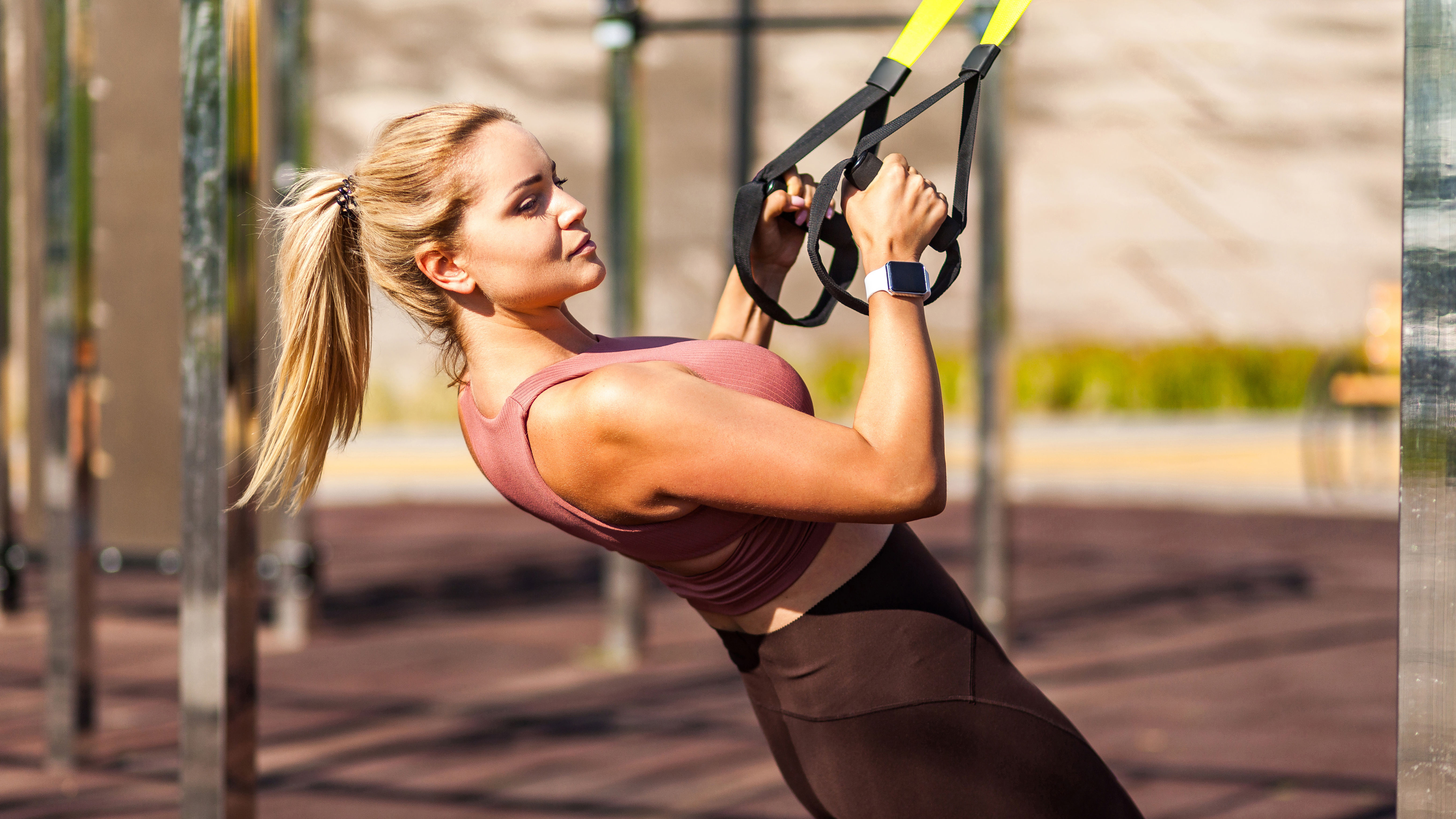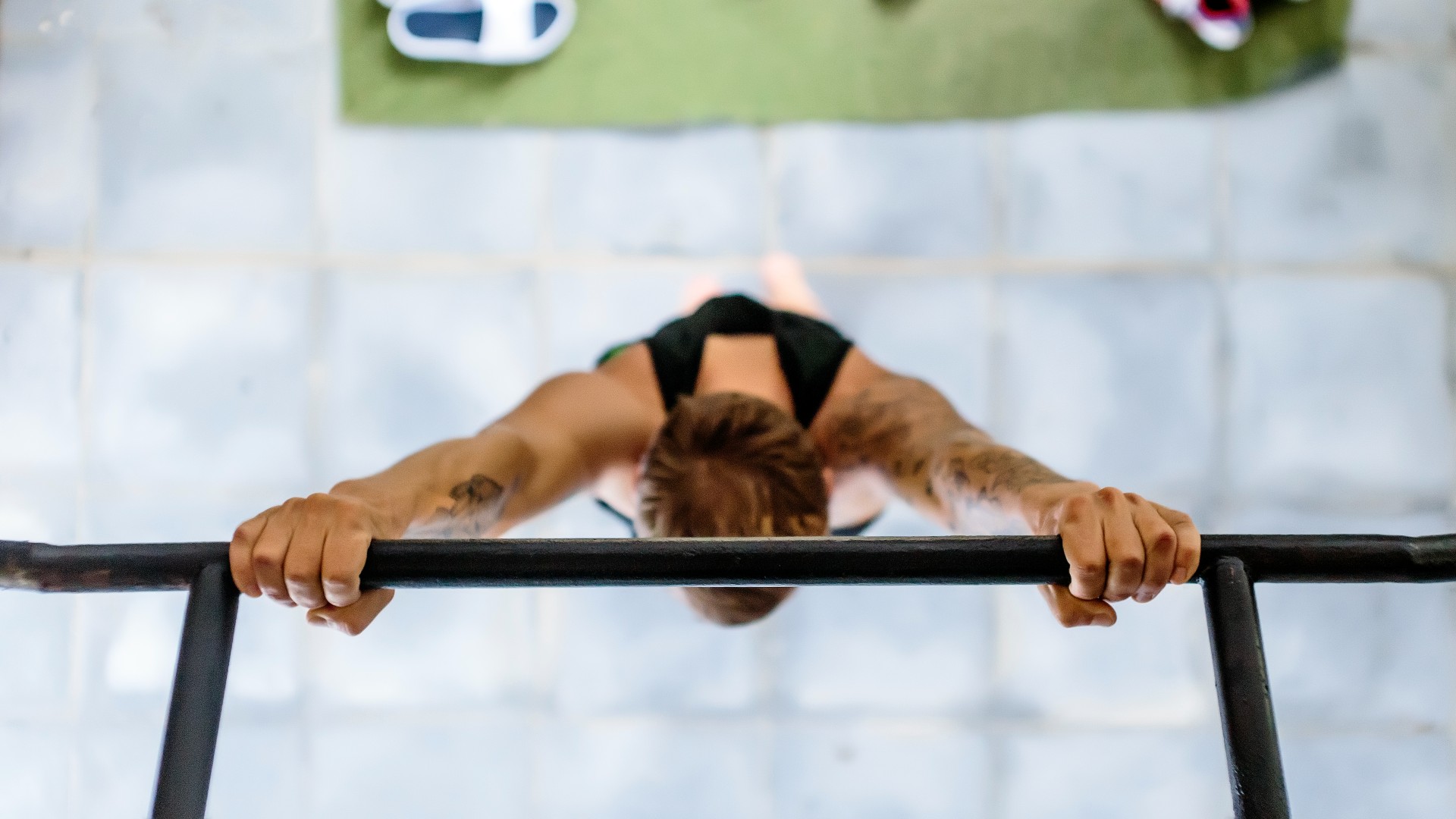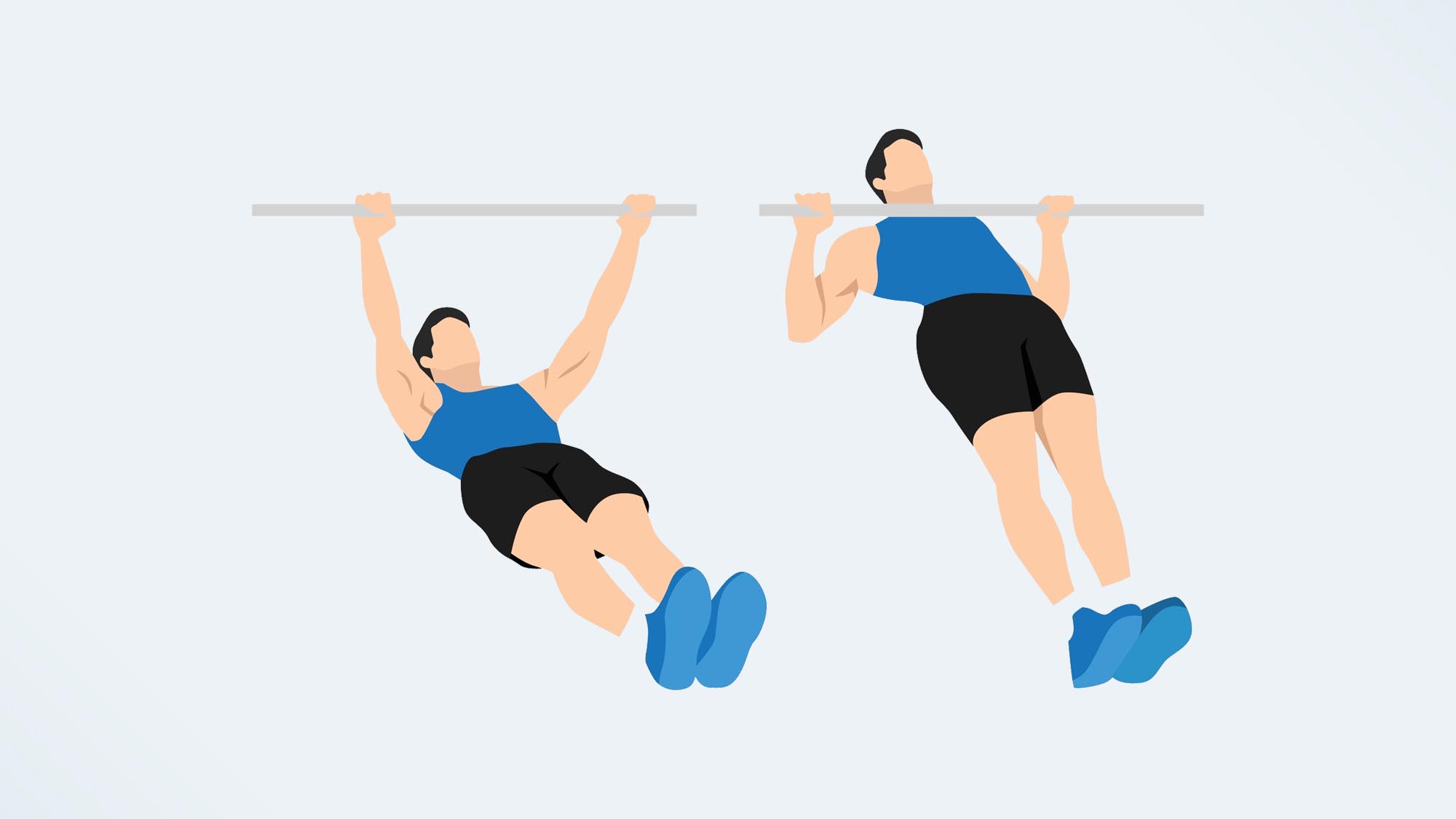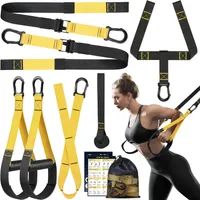
I love pull-ups because they are the epitome of a challenging bodyweight compound exercise, meaning they target multiple muscle groups and joints simultaneously. If you can do them with just your own weight, great, but they are also endlessly scalable using one of the best resistance bands.
Don't worry if you can't do pull-ups yet, or you’re just looking for another way to build your back and biceps. All you need to start with is to improve foundational upper-body strength. And you can achieve this using a bodyweight exercise that targets the same muscle groups, but with a horizontal pulling motion rather than a vertical one.
Here’s how to do the bodyweight row and why I recommend it as a pull-up alternative. Plus, these are the benefits of building strength in your back and biceps.
What are the benefits of pull-ups?

Pull-ups are a bodyweight strength exercise, and many gym-goers see them as the gold standard for natural upper-body strength. But there are functional training benefits as well, like being able to pull your own bodyweight upward. That translates to situations like climbing or pulling yourself out of water.
The exercise mainly strengthens your upper body muscles, like your biceps, shoulders and back. It also improves forearm and grip strength and requires your core for stabilization. Of the back muscles, these include the latissimus dorsi, teres major, posterior deltoids and mid to lower traps, plus a little emphasis on the pectoralis major, depending on your grip (palms toward you, which is a chin-up).
It’s worth learning the difference between pull-ups versus chin-ups; most people find chin-ups easier, and it'll work your biceps and pecs slightly differently.
Can beginners do pull-ups?
It depends entirely on your experience with exercise and, to some degree, how you're built. I've found that even without much practice, I've always been able to maintain a couple of pull-ups unaided, and that is in part because I have high levels of relative strength. Think of a gymnast; these people have high relative strength, which means they are strong compared to their body size.
Get instant access to breaking news, the hottest reviews, great deals and helpful tips.
You might also find pull-ups fairly easy if you've developed the relevant muscle groups through other means of exercise or sports. For most of us, it takes time to build the strength and skill to perform them.
There are a few movements that will help you get there, and these include inverted rows or Australian pull-ups. I would aim to get strong at these before moving to pull-ups with a resistance band, because I've always been taught it's usually better to work at strengthening your muscles first with your bodyweight and learning the correct movement patterns before relying on other means.
One bodyweight exercise I love is the bodyweight ring row; you can switch rings for TRX or suspension trainers. It builds foundational strength before you head to the bar, and improves stability and coordination.
How to do the bodyweight ring row

The bodyweight ring row is a pulling exercise that can improve gymnastic skills and help with pulling power, strengthening your back and biceps like a pull-up does.
How:
- Set up gymnastics rings or a bar in front of you. The handles should be between hip and chest height, depending on how vertical you want to be.
- Grip the rings overhand or neutral, engage your core and place your feet on the ground hip-width apart.
- Lean back and extend both arms shoulder-width apart. Ensure your body forms a straight line from head to toe.
- Bend your elbows and pull your body upward as far as you can, drawing your elbows back and squeezing your shoulder blades together.
- Lower to the starting position. Repeat for reps.
Verdict
There are plenty of variables to play around with to make this exercise harder or easier. Stepping your feet further away will make the exercise more challenging, whereas walking your feet closer to a standing position will make it easier. A neutral grip creates a narrower position, whereas an overhand grip creates a wider movement pattern and closely mimics a standard pull-up.
Gymnastics rings are fantastic at freeing up your range of motion, challenging balance, stability and coordination without the rigidity of bars. Suspension trainers are similar in this way, and you can adjust the height of the rings and suspension handles to suit your exercise.
The most well-known suspension training brand is TRX, and you can pick up options for home gyms with adjustable straps, a door anchor and combined foot cradles and handles.
Take your time practicing the full range of motion and moving with control as you lower your body weight every rep, utilizing time under tension — keeping muscles contracted for longer. I recommend aiming for 8-12 reps and 3-4 sets, gradually increasing the difficulty by adjusting the height of the handles or your body.
Resistance Trainer Exercise Straps: now $59 @ Amazon
Practice a range of bodyweight exercises at home, including rows, push-ups and core exercises, using this suspension training set for just $59.
As master Hyrox trainer, Jake Dearden, explained to my fellow writer when she was learning to do a first pull-up: “There’s merit in building strength in the muscles individually, but it is better to train them simultaneously.” The main reason is that you’re training muscles to recruit together the way they would during the pull-up itself.
Barbell bent-over rows, seated rows, assisted pull-ups and other multi-muscle pulling exercises will help you develop the prerequisite strength to pull your own body weight over the bar. But that doesn't mean that isolation exercises like biceps curls don't have a place in your workouts; we just recommend prioritizing compound exercises.
More from Tom's Guide
- No, not sit-ups, here's the one abs exercise you should do to strengthen your core without weights
- This 15-minute arm workout builds your triceps, pecs and shoulders in 15 moves
- How much protein do you need to build muscle?

Sam Hopes is a level 3 qualified trainer, a level 2 Reiki practitioner and fitness editor at Tom's Guide. She is also currently undertaking her Yoga For Athletes training course.
Sam has written for various fitness brands and websites over the years and has experience across brands at Future, such as Live Science, Fit&Well, Coach, and T3.
Having coached at fitness studios like F45 and Virgin Active and personal trained, Sam now primarily teaches outdoor bootcamps, bodyweight, calisthenics and kettlebells.
She also coaches mobility and flexibility classes several times a week and believes that true strength comes from a holistic approach to training your body.
Sam has completed two mixed doubles Hyrox competitions in London and the Netherlands and finished her first doubles attempt in 1:11.
You must confirm your public display name before commenting
Please logout and then login again, you will then be prompted to enter your display name.



